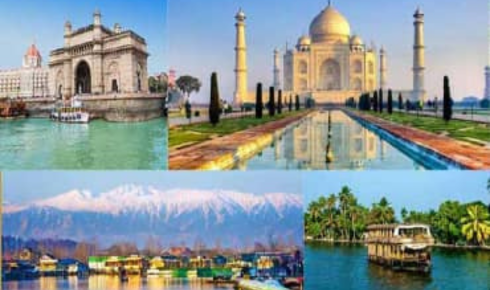Sundarban West Bengal Tourism: A Gateway to Nature’s Untamed Majesty

Nestled in the southern part of West Bengal, the sundarban west Bengal tourism experience is an extraordinary journey into one of the most unique and captivating ecosystems on Earth. Known for its dense mangrove forests, winding river channels, and mysterious wildlife, the Sundarban is a paradise for nature lovers, wildlife photographers, bird watchers, and adventure seekers.
The name “Sundarban” is derived from the “Sundari” tree, a type of mangrove that thrives in the saline coastal waters of the region. This UNESCO World Heritage Site forms the world’s largest mangrove forest, spreading across India and Bangladesh. The Indian portion of the Sundarban covers approximately 4,200 square kilometers and is part of the Ganges Delta. It is a designated biosphere reserve and national park, playing a vital role in biodiversity conservation.
One of the most iconic attractions of Sundarban is the elusive Royal Bengal Tiger. Adapted to the marshy terrain, these tigers are known for their swimming abilities and unique hunting habits. While sightings are rare due to the dense foliage, the thrill of possibly spotting one adds a sense of wild wonder to every boat safari. Apart from tigers, the Sundarban is home to saltwater crocodiles, fishing cats, spotted deer, wild boars, otters, and over 250 species of birds including herons, eagles, kingfishers, and migratory waterfowl.
Tourists can explore the Sundarban through various watchtowers and nature trails. Key attractions include Sajnekhali Watch Tower, which also houses a mangrove interpretation center and a crocodile enclosure; Sudhanyakhali Watch Tower, known for regular tiger and deer sightings; and Dobanki Canopy Walk, offering an elevated walkway through the forest canopy for a panoramic view of the wilderness. These areas are strategically developed to ensure both safety and close encounters with nature.
Traveling through Sundarban is typically done via motorboats or ferries. The interconnected network of tidal rivers and estuaries makes boating not just the primary mode of transport, but also a serene way to soak in the region’s natural beauty. The quiet glide of boats through the misty waters, flanked by dense mangrove trees and the occasional splash of wildlife, creates a truly immersive experience.
A trip to Sundarban is also a cultural journey. The people living in and around the forest have developed a harmonious coexistence with the ecosystem. Many tours include visits to nearby villages where tourists can learn about traditional fishing, honey collection, and local crafts. Folk songs and dance performances narrating stories of local deities like Bonbibi, the protector of the forest, add a spiritual dimension to the experience.
The best time to visit Sundarban is between November and March, when the weather is pleasant and wildlife activity is at its peak. During these cooler months, the chances of spotting animals and birds increase, and boat rides are more comfortable.
Most tours start from Kolkata, with travelers taking a 3-4 hour journey to Godkhali, the gateway to the Sundarban. From there, guided boat trips take visitors deep into the forest. Tour operators offer various packages, from day trips to multi-day adventures with accommodations in eco-friendly resorts or floating lodges.
With a growing emphasis on sustainable travel, Sundarban tourism initiatives now focus on eco-tourism. Local authorities and private operators encourage responsible travel practices such as minimizing plastic use, respecting wildlife, and supporting community-based tourism. This ensures that the fragile ecosystem is preserved for future generations.
In conclusion, Sundarban West Bengal tourism is more than just a vacation—it is a life-changing encounter with one of the Earth’s most enigmatic and awe-inspiring natural wonders. Whether you are a wildlife enthusiast, a nature photographer, or simply a curious traveler, the Sundarban promises a soulful retreat into the heart of the wild.






